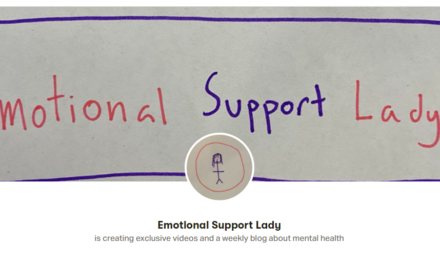A business operations plan is not the same as a business plan.
A business plan is like a travel itinerary – it tells where you want to go. A business operations plan is like a digital map – it tells you how to get there and helps you navigate unexpected road closures and traffic jams to get you where you want to go.
All content entrepreneur journeys can benefit from a business operations plan. Yet, many don’t create one. You may think, “I’m the only person in my business. I know what I have to do.” Or, “It’s a good idea. I’m just too busy to sit down and do it.”
But documenting your business operations helps you see the big picture of what you’re doing, why, and when. It enables you to make more deliberate decisions about priorities, address potential challenges earlier, and lead you to achieve your business goals more quickly. Here’s how to create it:
Just because you're a solo #entrepreneur doesn't mean you don't need an operations plan for your business in the #CreatorEconomy [step-by-step guide]. Share on X1. Excerpt your business plan, aka the Content Inc. model:
Briefly detail your business mission, content tilt, target audience, and goals. These elements belong at the top because they are the foundational elements of your venture and should ground the operations plan.
2. Set three to five objectives:
Goals usually are big-picture generalities. Objectives detail the thresholds necessary to realize those goals. Each objective should follow the SMART model – specific, measurable, achievable, relevant, and time-bound.
Pay close attention to “measurable” and “time-bound.” Your objectives must have numbers. Without a measurement number, you can never measure progress or success. Without a deadline, you never have to assess if you achieved the metrics. (And let’s face it, you’re a creator who lives life by deadlines. Without one, you’ll probably never do it.)
Example: Grow newsletter subscribers by 10% within three months.
I recommend limiting the objectives to a few so you don’t get overwhelmed and spread your operations so thin that none is achieved.
Limit your business objectives to a few so you don't spread operations so thin that you achieve none of them, says @AnnGynn. #ContentEntrepreneur Share on X3. Document how to do them:
Under each objective, detail what must happen to achieve it. What do you do first? And then? Include every step, no matter how small.
Example of newsletter growth objective: Publish a weekly newsletter to retain subscribers. Calculate the number of average daily new subscribers needed. Develop a referral program to incentivize the audience to help promote the newsletter. Revamp calls to action in all content to promote newsletter subscribers.
Note: For space purposes, this to-do list, as well as the steps below, are broader and more abbreviated than yours should be.
4. Assess each step:
Estimate the resources necessary to accomplish each step. Include a range of hours for you or someone else to execute the task. Add a budget amount if you plan to hire someone else to do it. What technology will you need? If you don’t already have that tool, detail the cost. What else is necessary to complete this step?
Example of step in newsletter growth objective: Step: Develop a referral program. Resources: 4-6 hours to research referral programs and tools; 8-10 hours to develop benefits program and related content; 3-6 hours to buy and learn new referral tracker tech; 5-7 hours to develop referral marketing materials; 1-2 hours to implement referral tracker tech; $99 a month for referral tech tool.
5. Operationalize the work:
Now that you know what needs doing and how it will get done, you can develop a calendar that unites everything that needs to get done to achieve your objectives. Don’t expect this process to go quickly. It’s a complicated puzzle to put together.
I recommend adding every step with its investment in the order you would like to execute them. Rank the priority of each one. A indicates a must-do at a designated time. B indicates some flexibility on when it can be accomplished. C means a task that can be done anytime within the objective’s timeframe.
Order them by priority and add the numbers (hours and financial) for each task. Then, map the tasks to a calendar based on your availability and ability to commit the necessary dollars. Review the calendar to see if it’s doable or if tweaks are needed.
Example of newsletter growth objective: Publish weekly newsletter (10-12 hours) is an A priority. Research referral programs and tools is a B priority.
6. Mitigate the risks:
What could prevent you from achieving the objective? Is there a competitor heavily promoting a similar newsletter? Is your newsletter’s content – topics, format, etc. – still relevant for the audience? Do you have sufficient time to execute the tasks? What about the available budget?
Does your business operations plan address potential challenges? If not, identify them and mitigate the risks, says @AnnGynn. Share on XWith those potential hurdles in mind, develop a plan to reduce their negative impact.
Example of newsletter growth objective: Risk: The unsubscribe rate has recently increased. Plan: Evaluate the subject lines and topics that have led to the drop and reassess the content calendar.
7. Revise accordingly:
The risk assessment could create more tasks to do or suggest a reconfiguring of priorities. If that’s the case, revisit steps four and five.
8. View your business operations calendar twice a day:
Now that you’ve got everything in order, you’re ready to execute it. Keep this map front and center as you go about your work. Review it before you start working each day so you stay on track. Look at it again at the end of the day to assess what you thought would be done. If everything didn’t get done, update the calendar so what still needs to happen doesn’t get forgotten, and expectations are readjusted.
A business plan is great. A business operations plan will let you get to where you want to go.
How do you execute your business operations? Tag us #TheTiltNews or send us an email.
About the author
Ann regularly combines words and strategy for B2B, B2C, and nonprofits, continuing to live up to her high school nickname, Editor Ann. An IABC Communicator of the Year and founder of G Force Communication, Ann coaches and trains professionals in all things content. Connect with her on LinkedIn and Twitter.

![Boost Your Creator Business Success With a Business Operations Plan [Step-by-Step Guide]](https://www.thetilt.com/wp-content/uploads/2023/08/business-operation-plan-feature.jpg)








